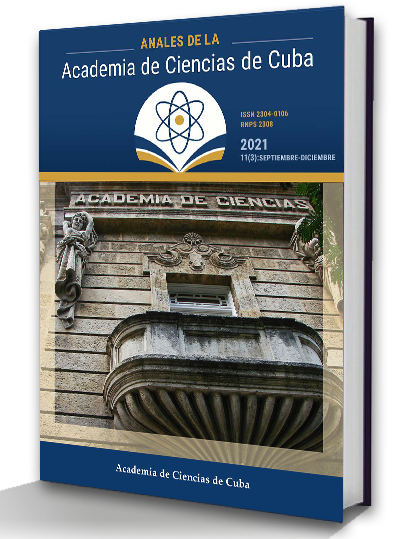Environmental mycological quality in Cuban archives and its impact on the personnel's health
Keywords:
environmental mycological quality, environmental fungi, nasal mycobiota, occupational hazard, allergic sensitizationAbstract
Introduction: The mycological quality of the indoor environment has been related to the appearance of allergies and other diseases due to the intense and persistent exposure to biological agents. The aim of this work was to assess the importance of the research carried out at the National Archive of Cuba over the last 8 years related to environmental mycological quality and its impact on the health of personnel. Methods: The results obtained were compared with those published in the last 10 years by experts from other countries related to the subject. Results: The evaluated environments showed variable qualities since the concentrations obtained in the air, dust and surfaces have been diverse. The predominant genera in the three ecological niches were Aspergillus, Cladosporium and Penicillium, although there are new records (genera and species) for each niche studied, so the results obtained are a world reference. The determination of fungal species in the nasal mucosa of the archive staff constitutes the first study in Cuba. Coincidentally, a predominance of the genera Aspergillus, Cladosporium and Penicillium was obtained. 40,3 % of the personnel showed positive skin sensitivity to one or more fungal extracts. 54,2 % of the workers reported incidence of more than one disease with a predominance of asthma. The time of exposure of workers to the more or less contaminated environment of the archive (9 to 12 years) facilitates the nasal colonization of fungal species that can lead to the triggering or exacerbation of allergic states such as asthma and rhinitis.Downloads
Downloads
Published
How to Cite
Issue
Section
License
The journal Anales de la Academia de Ciencias de Cuba protects copyright, and operates with a Creative Commons License 4.0 (Creative Commons Attribution-NonCommercial License 4.0). By publishing in it, authors allow themselves to copy, reproduce, distribute, publicly communicate their work and generate derivative works, as long as the original author is cited and acknowledged. They do not allow, however, the use of the original work for commercial or lucrative purposes.
The authors authorize the publication of their writings, retaining the authorship rights, and assigning and transferring to the magazine all the rights protected by the intellectual property laws that govern in Cuba, which imply editing to disseminate the work.
Authors may establish additional agreements for the non-exclusive distribution of the version of the work published in the journal (for example, placing it in an institutional repository or publishing it in a book), with recognition of having been first published in this journal.
To learn more, see https://creativecommons.org






